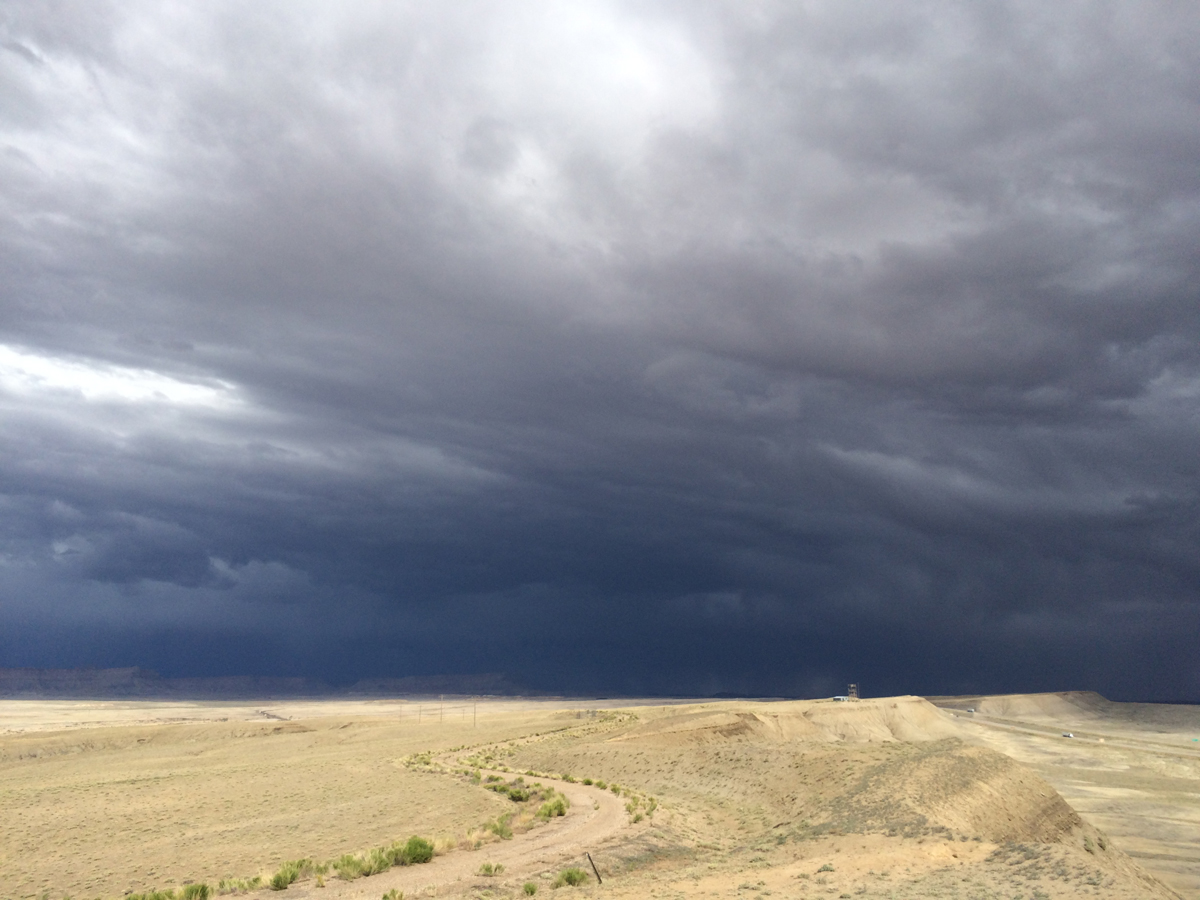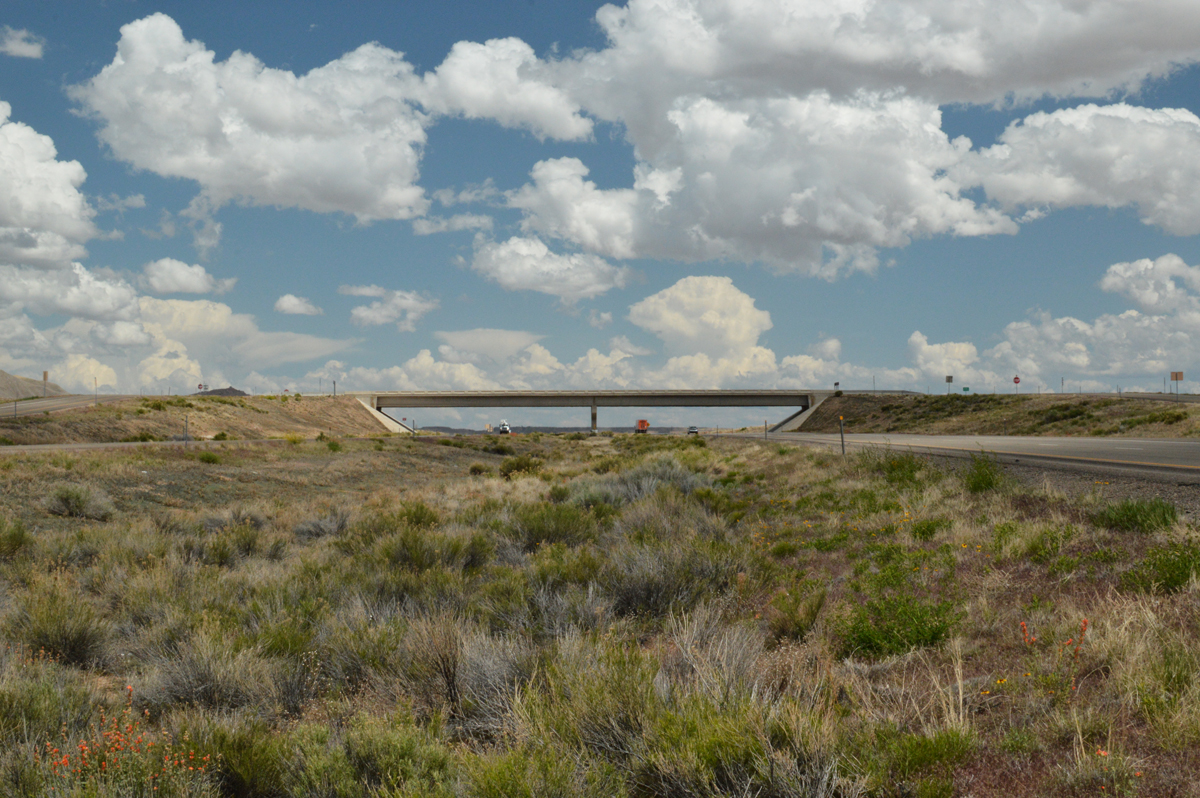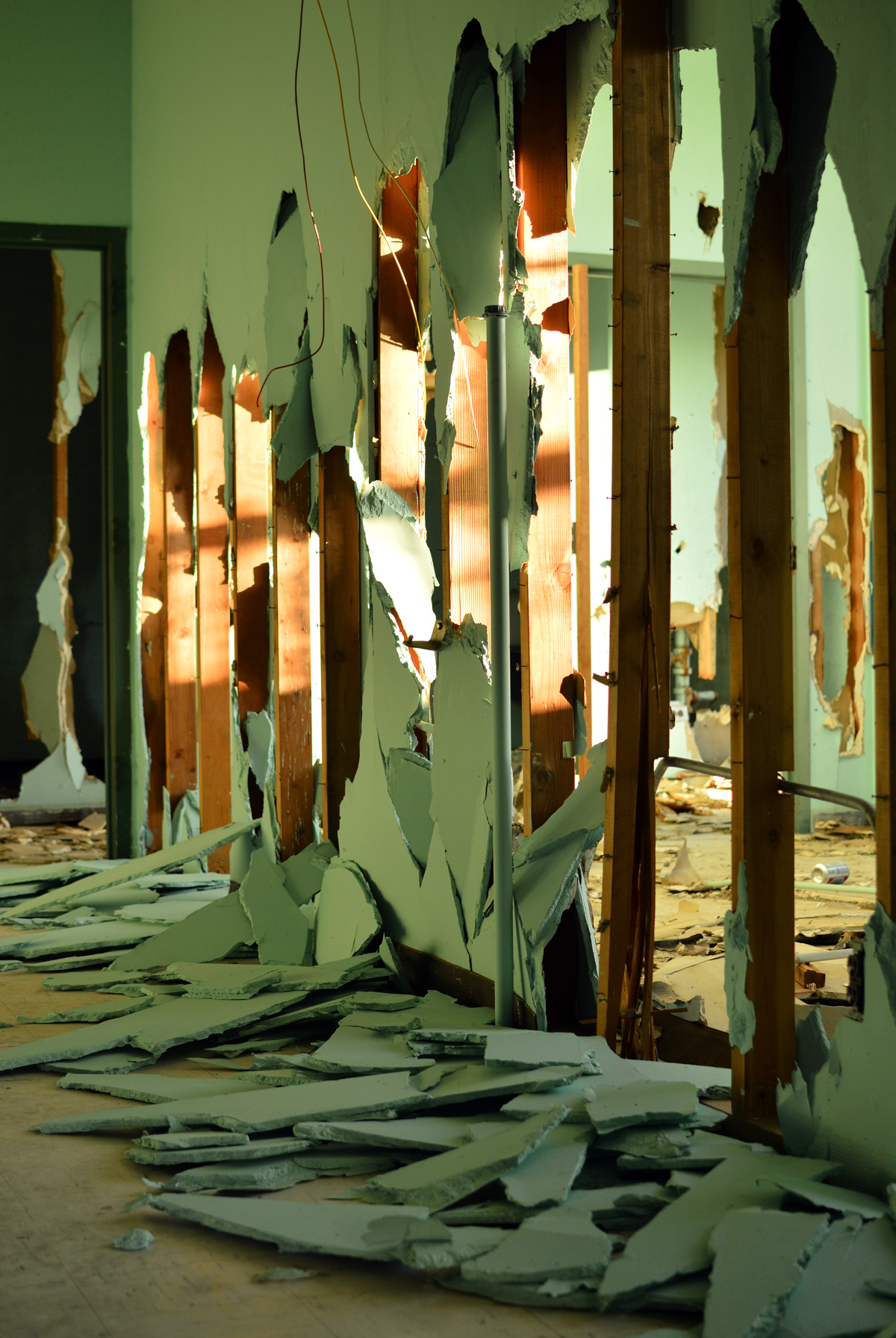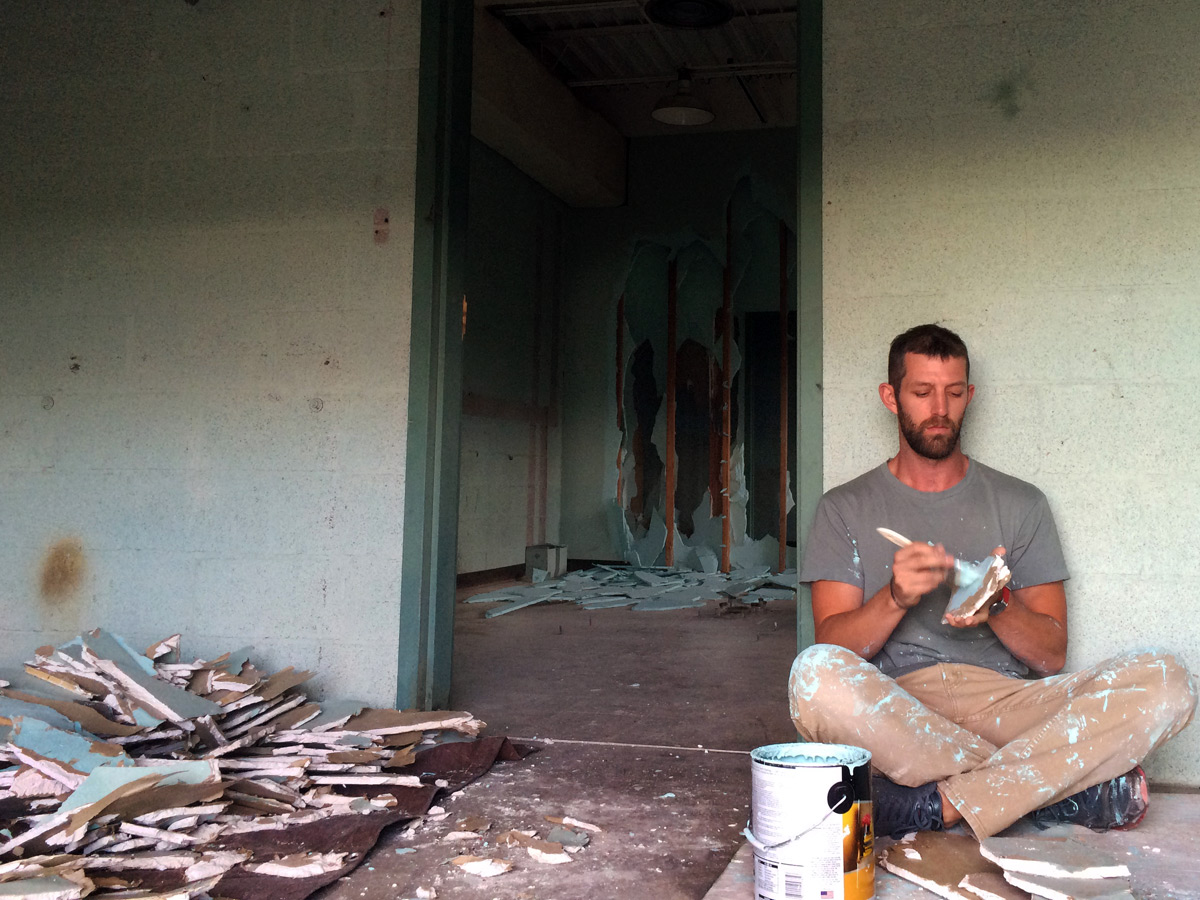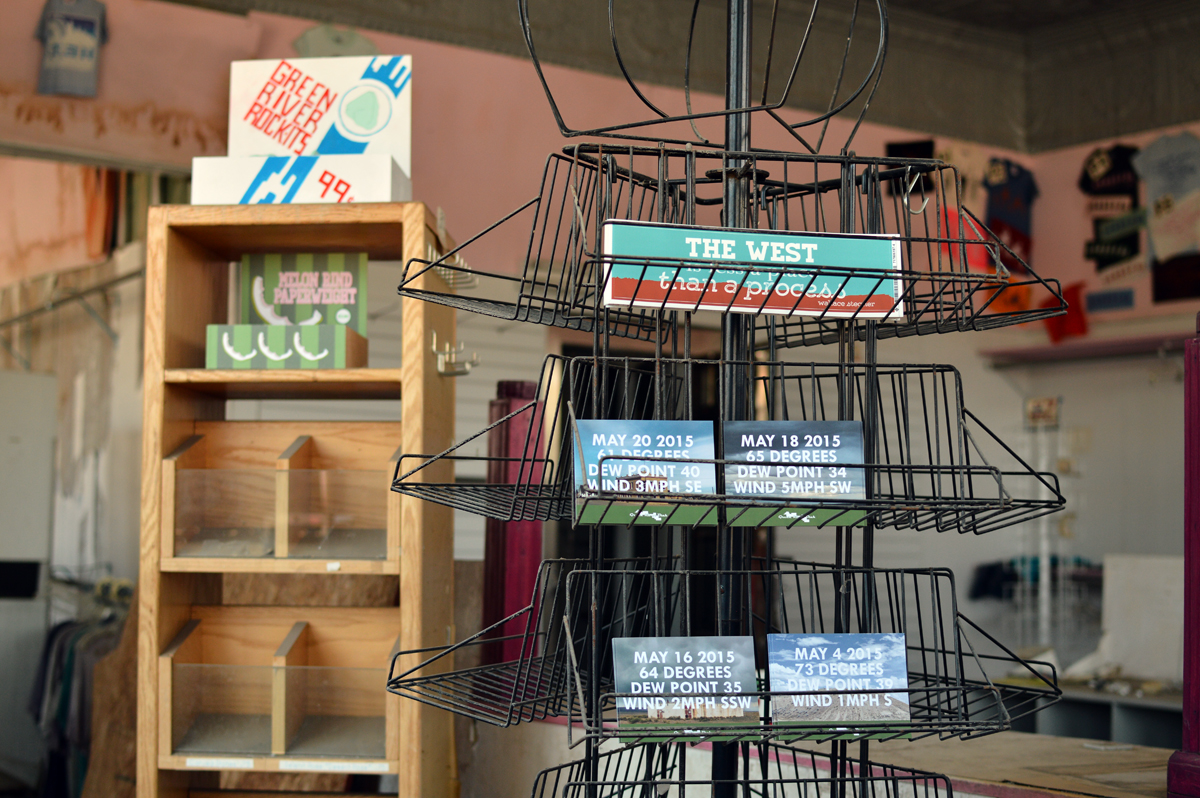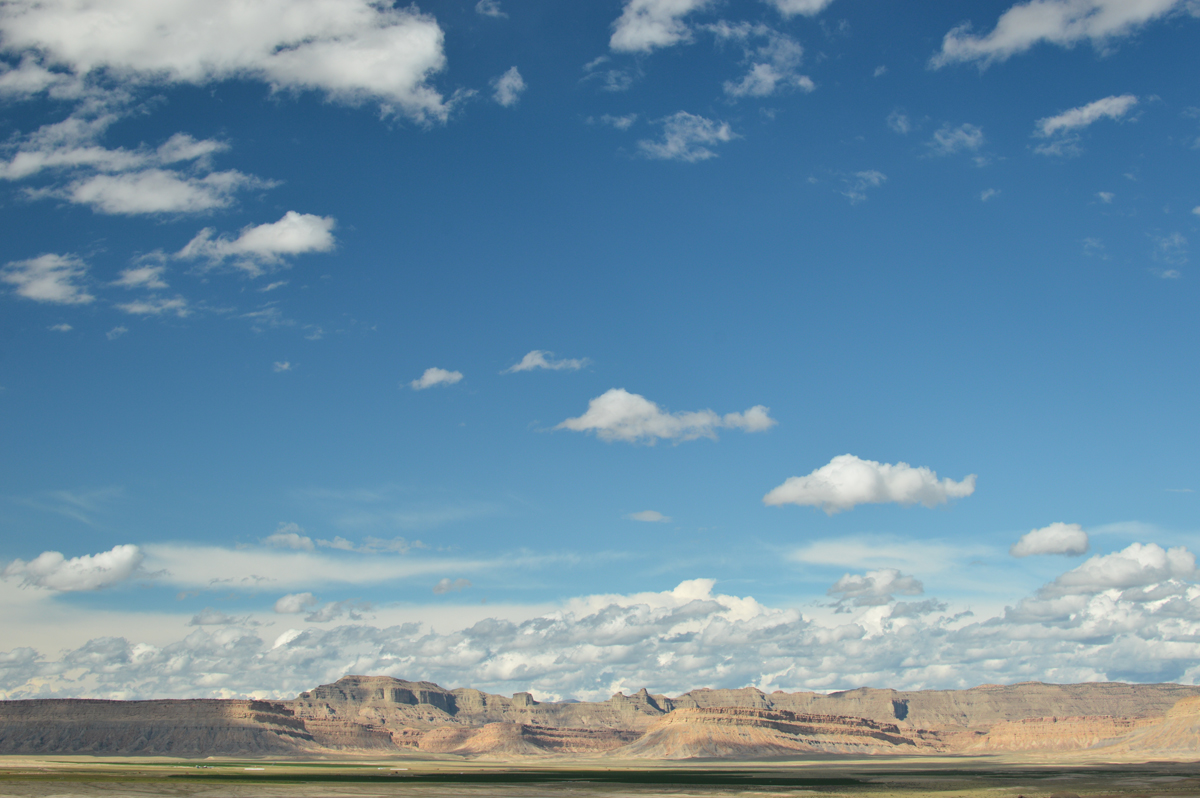
May was my first time back to Green River since I stopped to get gas in the middle of the night in 2013. So, it is safe to say I knew nothing about the town. What little I knew I got from internet research and phone calls. I also knew that my Google-knowledge was going to be ineffective/useless once I got to town and had a direct, time intensive experience.
So, in preparation for my time in Green River I started asking myself a few questions:
-What does authentic engagement mean? What does it look like?
-How will I know if I successfully experienced the “true” Green River?
-What kind of meaningful relationships can be made in one month?
-What project could I conceive and execute that would add to the spirit and dialogue of the town in a deeply meaningful way?
And after all that preparation, when I actually got to Green River the first thing that caught me was all the fantastic clouds.
Talking about the weather is one of my favorite things. With such a short time to get to know the town of Green River and its residents (and those just passing through) the weather makes for a convenient way to start a conversation. Weather is always there, all around you, all the time.
At worst talking about the weather can be a boring conversation, at best it can be the pickup line that introduces you to your one true love! Most of the time it is just a quiet agreement between two people that you are both together in this same moment of time and space waiting for the rain to break so you can leave Melon Vine without your groceries getting soaked.
What I like about clouds is that they are named for a moment in time. To call a cloud a cumulus is to name it in a moment between what it was and what it will become. A cloud can be non existent and then become a cumulus and develop into stratocumulus and back again in a single sitting.
Much like clouds, to give words to my experience in Green River is to pin down one instance in a complex flow of moments, people, and circumstance that bloomed into a temporary form. I struggle with a desire to commit ephemera to a fixed state but also let things flow.
Its that struggle that kept me aware of my fleeting time in Green River and how my experience is different from folks who lived there before my arrival and will continue to live there after I left. To aim for an honest response that would be respectful of a town I would never know as deeply as its residents.
My desire to make meaningful work was tempered against my desire to be cautious and respectful. This opened up a line of questions for me:
-How can a work be successful for many different audiences: residents, travelers, trained artists, people viewing the documentation of the work online, etc.?
-If most people will view my work through images on the internet, how can I design work that will be successful on that platform yet still be deeply rooted in site specificity?
-How could my work be part of a dialogue about complex histories without erasing or overshadowing that history?
-Given the short duration of my visit to Green River, how deep could I expect to get into any one topic and how will that affect the measures of success for work that demands complexity?
I spent my first week wandering the town and the surrounding desert hoping to uncover the answers I needed. I was hypnotized by the beautiful decay of the rocky landscape. The patterns of erosion and history that frame every view from town. I couldn’t help but find comfort in the fact that a damaged environment could illicit such joy and admiration, inspiring travelers to come from afar just to be amongst the broken rocks.
On the other hand, I was disappointed to witness travelers taking photos of decaying structures in town. Romanticizing the aesthetics of ruin. Creating contextless images to send out to people who would might never understand this town from a direct, visceral, and deeply personal perspective. I was concerned that when people do a Google search for Green River that the results would be a landslide of images showing a town in disrepair.
I took this as a cue to develop a project that capitalized on that impulse to photograph degradation. I chose a room in an abandoned missile test launch facility on the east side of town as my focus. I tracked down the paint color that was originally used in the 1960’s and got to work repainting the walls and the broken wall pieces that had been scattered across the floor after many incidences of vandalism. After cleaning the room of dirt and debris, I carefully reinstalled the painted, broken wall pieces on the floor as fresh objects. The arrangement mimics the original history of destruction but has been recodified as a space of intention, consideration and care.
This piece maintains the history or the building with the original paint color and its history of abandonment while redirecting the impulse to photograph decay. The hope is that it will interrupt the passive photograph by presenting a surreal combination of brand new and broken. Now that the room is cleaned and the objects are fresh will it still make a compelling photograph? Is the history of damage enough to generate interest in the image? Is there something inherently beautiful about the way things break?
Likewise, the other project I executed is in a deserted souvenir shop. I created 4 new souvenirs that were installed in the former store and available for adventurous visitors to take:
-4 postcards commemorating the weather at specific times and days during my residence
-A bumper sticker with a Wallace Stegner quote and the outline of the Book Cliffs
-A box of painted river rocks styled after late 60’s space-race design
-A box displaying “sold out” paperweights in the shape of leftover watermelon rinds
As I started asking myself how I would communicate my time in Green River, I began to question the nature of souvenirs and commemorative objects. I tried to reimagine the objects of a gift shop that could create authentic experience rather than just capitalize on the desire to prove attendance.
By leaving these objects unattended in the old gift shop I invite visitors to replace the paradigm of “paying money in exchange for objects that commemorate your experience” with one where the acquisition of the object is the experience itself. And because the intention of the objects is a bit opaque, they demand an extra amount of engagement to make them meaningful. To take one of my postcards and mail it necessitates a deeper explanation and connection than simply writing “wish you were here”. It dictates deeper involvement and specificity. These objects of tourism deny easily accessed tourism experiences and in its place offer opportunities for authentic engagement.
With these two projects I hope to create new awareness around what it means to visit a place, photograph it, commemorate it, and leave it with an eye toward authentic, respectful experience but also pathways for meaningful interactions.
On my last day in town, the clouds finally dissipated. It was a sunny day and folks were driving to the beach while I drove North back to Portland. We are all in constant motion, reconfiguring to become something again tomorrow. I’m grateful for my short time in Green River and all the ways that it will affect who I become tomorrow.
